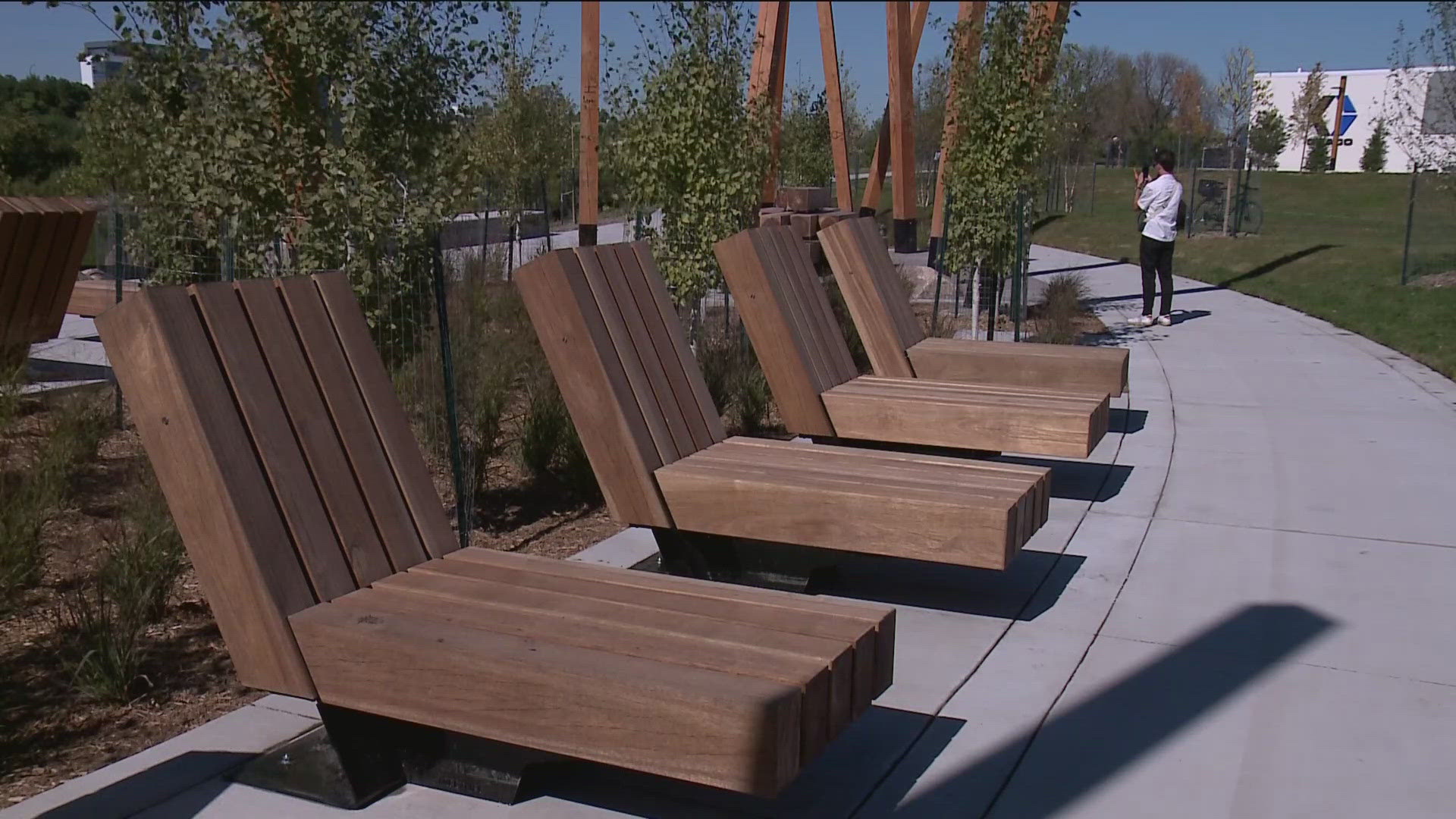MINNEAPOLIS, Minnesota — The City of Minneapolis has a new park in Northeast called Graco Park.
Its namesake comes from its neighbor, manufacturing company Graco Inc. which was a partner in bringing the park to life.
The new park pays homage to the old history at the site. Once a long-time lumber yard, the 9-acre lot has been beautified into a community space with picnic tables, an outdoor stage, a grassy seating area, a gravel river landing, heated sidewalks, a multi-use building, and spaces for food trucks.
"What I say is parks raise everybody's quality of life," Minneapolis Park and Recreations Board president, Meg Forney said.
“If we’re going to have a truly equitable park system, residents of Northeast and North Minneapolis must be able to enjoy thoughtfully designed access to the Mississippi Riverfront, like residents in South and Southwest enjoy the riverfront, creek and lakes in their neighborhoods,” said Minneapolis Park and Recreation Board (MPRB) Superintendent Al Bangoura. “This is something that we’ve advocated for and worked on for decades, and now these parks are no longer just ideas, plans, or illustrations; they’re real. We’re in the middle of a golden era of riverfront park development in Minneapolis.”
The work at Graco Park isn't over. Future phases include a new 4,000-square-foot park building called The River Hub at Graco Park scheduled to open in 2025 and a trail connection under Plymouth Avenue Bridge to Boom Island Park. MPRB says the $3 million donation from Graco Inc. helped get the park constructed much earlier than it could have through traditional park funding mechanisms. The rehabilitation of the old lumber site took 14 years, according to Bangoura.
"The things we are doing along the riverfront is absolutely incredible," Bangoura said.
According to MPRB, the restored habitat works hand-in-hand with the new green stormwater infrastructure at the park. A series of interconnected stormwater basins, planted with native vegetation and scattered throughout the site, form a stormwater treatment train to capture and clean runoff. These features are projected to capture 99% of the park’s stormwater runoff and remove up to 85% of sediment and phosphorus that otherwise would have entered the Mississippi River.

